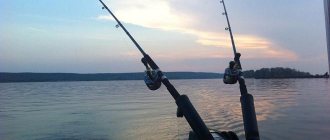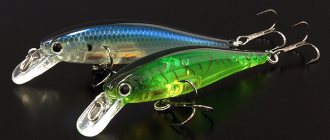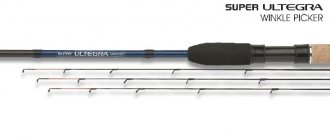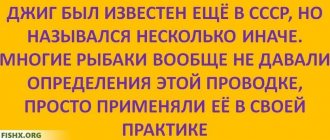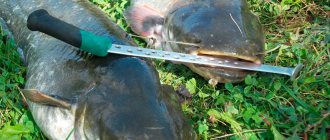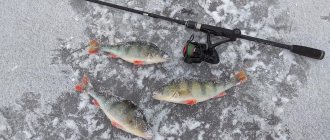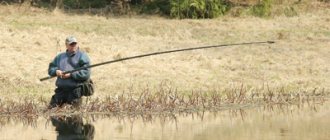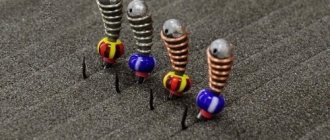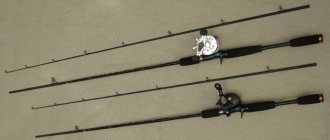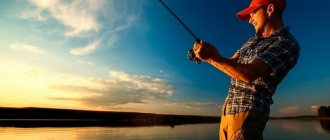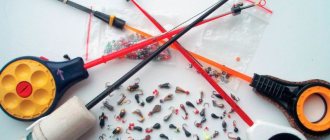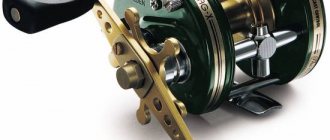Buy quality products at affordable prices in the best fishing online stores
. Give gifts to yourself and your loved ones!
we are in social networks
— subscribe to us on Facebook, Youtube, VKontakte and Instagram. Stay up to date with the latest site news.
Treble hooks are most often used in spin fishing and live bait fishing. Most spinners, wobblers, balancers and other baits are equipped with tees. Today it is no longer a problem to buy good treble hooks. For example, products from Ovner are already available to residents of small towns. It’s not a problem to order hooks in any online store you like.
Features of tees
Tees are subject to higher requirements than single hooks. And this is quite logical. If a regular hook can be easily replaced, then with tees you will have to spend more time on replacements. It happens that a wobbler or other bait is well made and suitable for specific fishing conditions, but its hooks are not sharp. Experienced spinning players always have the necessary supply of doubles and trebles to replace store-bought ones.
A good tee does not have to be made of hardened wire. Many manufacturers use reinforcing wire treated with chemical compounds. It is very durable and does not bend. If such a rough comparison is permissible, then there are steel wires, not hardened, which are very difficult to bend and cut even with wire cutters.
Very strong and sharp tees are made from such wire. They are good for catching even catfish. You just need to choose the right size and thickness. A catfish can unbend such an anchor, but only if you do not guess with the size of the treble hook.
There are many high-quality tees with hardened and non-hardened wire on sale. The main thing is to always buy products that you have personally tested.
Special requirements are placed not only on the sharpness of the hooks, but also on their shape and design. For example, when fishing for pike perch with live bait, it is critical that the hook penetrates the mouth as deeply as possible. Such hooks do not have a very long shank and a more rounded bend.
They are made of thick wire and allow you not only to detect the hard mouth of a pike perch well, but also to hold it when fishing.
In general, tees are made from fairly thick wire. This is completely justified. Even small threesomes are made of thick wire. Thin models cut through the lips, and aggressive predatory fish often escape from such hooks.
For pike and perch, you can use treble hooks with different shank lengths. This parameter does not particularly affect the effectiveness of sweeps.
Many anglers advise using treble hooks with tips bent to the side so that they are not parallel to the fore-end. Practice has shown that asp, pike and pike perch are better caught on treble hooks whose stings are slightly bent to the side.
When fishing, it is very important to check the sharpness of your hooks. Probably every fisherman knows how to do this. It is enough to run the tip of the sting along the nail. If it goes on tightly and leaves a scratch behind, it means it’s sharp. If it just slides, it means it's stupid. It is not necessary to change the tee immediately after this. You can sharpen it using a special sharpener or fine sandpaper. You should always have a sharpener when fishing. With its help, you will restore the sharpness of your hooks in seconds.
In addition to hardened and silver models, there are also bronze, golden, brown, red and other colors of tees. It is better to select models that do not contrast with the bait.
If we talk about specific manufacturers of tees, then in addition to the well-known Ovner, we should highlight the Norwegian one. She makes excellent tees that do not need any modification or sharpening. When using these products, fish gatherings are excluded. Defective specimens are not found in packs either.
Variety of ways
There are many ways to rig live bait. To begin with, the equipment can use a single, double, and also a tee. There is no clear guideline regarding hook options; each angler uses what is most convenient for him. In general, many agree that a double hook is the most optimal, since hooking with it is almost always effective, unlike a single hook.
On the other hand, with a double hook, the predator will be less likely to prick the free sting than with a triple hook. The choice of configuration depends on the type of fish you plan to catch. For perch, a single hook will be enough, while for pike it makes sense to put a tee. The basic requirement for hooks is the same for all configurations. They must be sharp.
To keep live bait active longer, it is better to choose hooks with a thin and long shank. At the same time, they must be strong, that is, made of high-quality metal that will not bend or break when bitten by a large pike or pike perch. The thinner the hook, the less the bait is injured, and the predator is attracted only by live fish. It also matters how to attach live bait, which in turn depends on the object being fished, conditions and size of the bait.
First, let's look at how you can attach live bait to a single hook. There are several popular and very reliable methods:
Now let’s look at how you can attach live bait to a double. Many anglers consider a double to be a viable option. It has a better chance of successfully catching a predator when biting and at the same time is not as bulky as a tee, on which a predator can easily prick itself and spit the bait out of its mouth. Here are the most reliable ways:
Tips for fisherman: How to jig head for pike correctly - Features of choice
The methods for attaching live bait to a tee are, in principle, the same as when attaching to a single hook or double hook. But there are still distinctive ways. Let's look at all the options:
I hope the information received was interesting and useful to you, watch the interesting video below, and also go to our article “How to catch live bait,” which describes many ways to catch it.
Fishing, like any other activity, has its own characteristics and its secrets. Therefore, it makes sense to stop and consider some of them.
Tees for fishing in difficult conditions
Often you have to fish in snags and rocky areas of reservoirs. Tees often get caught on snags and hit rocks. In such conditions, the requirements for them are even higher. For such fishing, it is better to use Overheads. Even if they cost more, you won’t blame yourself for a bad tee that didn’t allow you to properly detect the mouth of a predator or pull the bait through a snag.
If the bottom is sloppy, then it is better to use tees that bend. These are easier to remove from snags. The sting can then be adjusted to the desired position.
Hooks become dull especially often when fishing on a rocky bottom when fishing for pike perch. In such cases, it is necessary to use hardened models that can withstand frequent contact with stones and do not dull as quickly as conventional tees.
In stores you can find tees with different types of tip sharpening. The same company Ovner patented its type of hook sharpening. It produces tees that have cutting edges on the sides and inside the tip. The result is micro-knives that, when hooked, deeply cut through the lips of the fish and allow the hook to easily penetrate the mouth. Even if you make an uncertain hook, the hook will catch the mouth well.
There is another type of sharpening - with a completely round tip section. It enters worse than the previous one, but it holds the fish better when playing. If the fish is hooked well, then it will never leave such a hook.
It is optimal to have both types of tees. If the bite is sluggish, then it is better to use tees with the first type of sharpening. And if the fish is active and swallows bait well, then preference is given to the second type of tees.
Choosing a wobbler when purchasing
- VK
Many people feel unsure when buying wobblers. How a spinner plays in the water, how an oscillating spoon moves or a twister wags its tail, you can imagine with some imagination, but with wobblers - the most expensive of all artificial baits - this is difficult to do. For many anglers, buying a new model is always like buying a pig in a poke. Content:
- STROKE DEPTH
- TRAVEL PROPERTIES
- WHAT YOU SHOULD PAY ATTENTION TO WHEN BUYING A wobbler
- wobbler color
- TEES ON WOBBLERS
- LENGTH
STROKE DEPTH
One of the most important criteria is the depth of the wobbler's stroke, which depends on three factors: the position of the blade, its shape and the location of the eyelet for tying the fishing line. For sinking models, their own weight is also important. The importance of the position of the blade can be illustrated by the example of the Hi-Lo (Abu) wobbler, which is equipped with an adjustable blade. “At 90° the wobbler no longer dives,” explains Peter. The further the blade is tilted upward, the deeper the bait burrows into the water. For the Hi-Lo wobbler, the depth formula says: blade up - wobbler down. If you need to fish on the surface or in very shallow water, you should use a wobbler with a steeply downward blade. But this type is also most suitable for fishing near the bottom with a front sinker. The bait goes only horizontally, and snags can be avoided.
Another important criterion is the shape of the blade. Most deep-running wobblers have a large “lip” and are equipped with a spoon-shaped blade. The location of the nasal loop also affects the depth of the stroke. If the loop is at the top, the wobbler goes deep, and if it is at the bottom, it goes shallow. For this reason, some wobblers are equipped with multiple nose loops, which allows for variation. You should not rely too much on the wobbler manufacturer's data on the depth of immersion. “They are only indicative,” says Biedron. The depth of the stroke also depends on the casting distance, the position of the rod and the thickness of the fishing line. The farther the bait is thrown, the longer it can go into the depths when reeling in and the deeper it dives. A thin line favors deep strokes, while a thick line reduces the depth of stroke. By holding the rod tip close to the surface of the water, you can achieve additional depth of the wobbler.
TRAVEL PROPERTIES
The properties of the stroke also depend on the shape of the blade. “Wide blades cause the wobbler to vibrate strongly, while narrow blades provide a rather quiet ride,” the expert reports. Which game will be more catchy depends on the reservoir. On intensively fished lakes or rivers, fish are caught better with slow-moving wobblers, but on untouched reservoirs, a more aggressive wobbler will be a trump card.
Peter does not believe in the effectiveness of the balls inside the wobbler. “No lure sounds as wild in the water as when it is shaken by a fishing salesman in a store.” Much better is a bait that sometimes lunges to the side and shows its vulnerable side to predators. In sinking wobblers, the game is also determined by the position of the load in the body. Lures with weights located close to the head move more calmly than models with weights located far from the head.
Where the sinker is located can be determined using a simple technique. The wobbler is turned over and held firmly by the abdominal tee. The bait tilts in the direction where the main part of the load is located. Two-piece wobblers play noticeably more sluggishly than solid ones, and therefore they are especially good for winter.
WHAT YOU SHOULD PAY ATTENTION TO WHEN BUYING A wobbler
Blade position
Blade angle.
The smaller the angle of the adjustable blade relative to the horizontal, the deeper the Hi-Lo goes. Shape of the blade
The shape of the blade is in the shape of a spoon - this is what deep-reaching wobblers look like.
Location of loops
The bow loop determines the depth of the wobbler's stroke. This model has two loops at once. If the wobbler is tied at the top, then the wobbler goes deeper.
Wobblers with loading
Wobblers with loading located in the front move smoothly.
The position of the load is determined by turning the wobbler over. Two-piece wobblers
Two-piece wobblers move sluggishly in the water, which is ideal for winter fishing.
Wide blades
Wide blades ensure aggressive play of the wobbler, while narrow blades allow it to move without deviating slightly to the sides.
wobbler color
Which color to choose depends on the time of year and the turbidity of the water. In winter, Bidron relies on rich colors and contrasting combinations, such as red and white. And the silvery-white color is good for catching winter predators. In summer, natural colors are more suitable. Buy a wobbler whose color is closest to the forage fish found in the pond. But even in summer, wobblers of bright colors can be catchy, especially if the water is cloudy due to algae blooms or intense precipitation.
Additionally, a dot drawn on the wobbler attracts predators. “But it should not be located too far in front, but somewhat behind or in the middle. This is better, because such an eye turns out to be an aiming point for a predator that attacks the bait from the depths,” says Biedron, guided by his own experience.
TEES ON WOBBLERS
Many wobblers are equipped with galvanized tees. Although some anglers underestimate them, they are quite good: they rarely rust and are quite durable. Many people rely on small tees because they stick better into the predator’s mouth than large ones. Before use, be sure to check their sharpness. A good hook should catch the thumbnail with light pressure. If this does not happen, the tee should be replaced.
How many tees are needed for a wobbler? When fishing for trout or perch, one treble is enough. When fishing for pike, you should not remove the second tee under the belly, as many pike attack from the front. The most annoying thing is the tees that overlap when casting. To prevent this from happening, you need to try to see if both tees engage with each other. If yes, then they should be replaced with smaller ones.
LENGTH
The ideal length of a wobbler depends on the object being fished and the time of year. Pike are usually caught with a large wobbler. In summer, when a lot of juveniles swim in the water, you can catch a large predator using a mini-wobbler. It is worth considering that with large wobblers there are many failures. Peter Biedron prefers wobblers that are as small as possible. He makes do with models less than 10 cm long all year round. Here are their preferred sizes: from January to May - 7-9 cm; from June to October – 4-5 cm; in November and December – 7-9 cm.
And one more piece of advice: “Buy wobblers that no one fishes with in the pond. They are better than those models that have already passed before the noses of fish more than once.”
Peter Biedron
Related articles:
Accessories for fishing
Spinning for Dummies
How to put pellets on a hook
Rods
